Important Christian, Jewish and Muslim traditions have been taking place on Mount Zion for centuries. The people who live and work on Mount Zion represent the cultural diversity of Mount Zion in particular, and of Jerusalem as a whole. Below you will find an interactive map of Mount Zion, where local residents tell the story of their organization, from their perspective. Follow the instructions, and receive information and videos on the sites about the different sites.
Let's start our tour outside the Zion Gate.
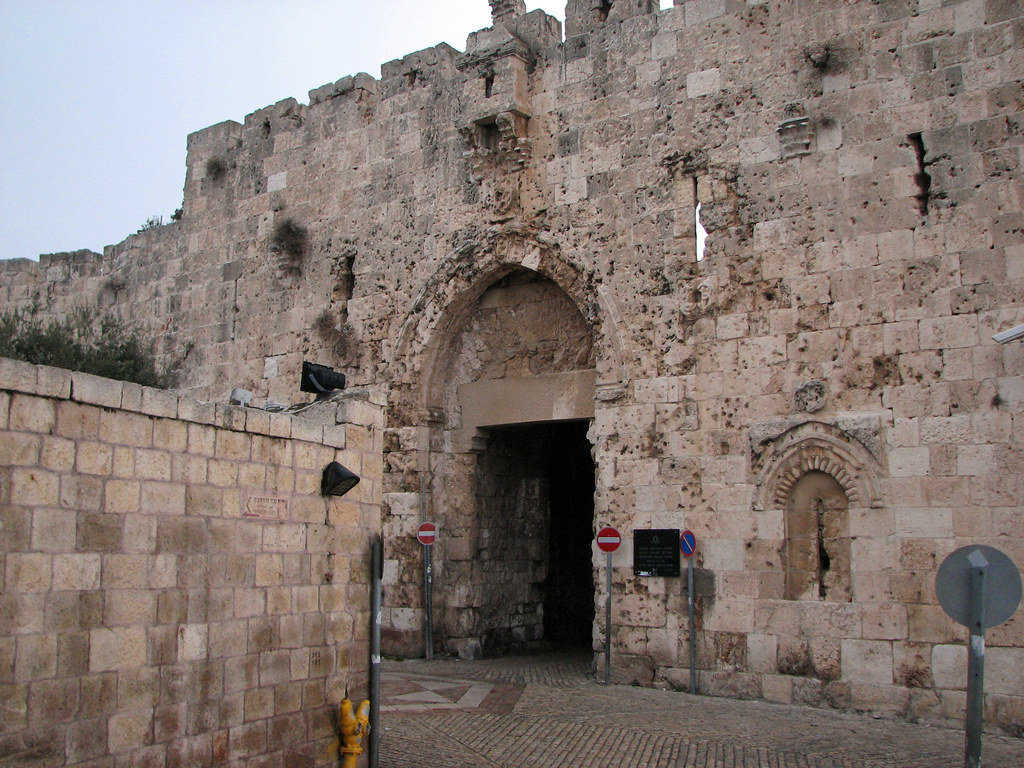
If you’re facing the Zion Gate, turn left and walk along the wall. After about twenty meters on the right is a large iron gate. Ring the bell and ask for permission to enter. If you were able to enter, go straight along the path until the building with an open courtyard, and walls with beautiful Armenian ceramics. If not, you can still get to know the Armenian St. Savior Church and the Monument in Memory of the Armenian Soldier through the video here and the picture of the Monument.
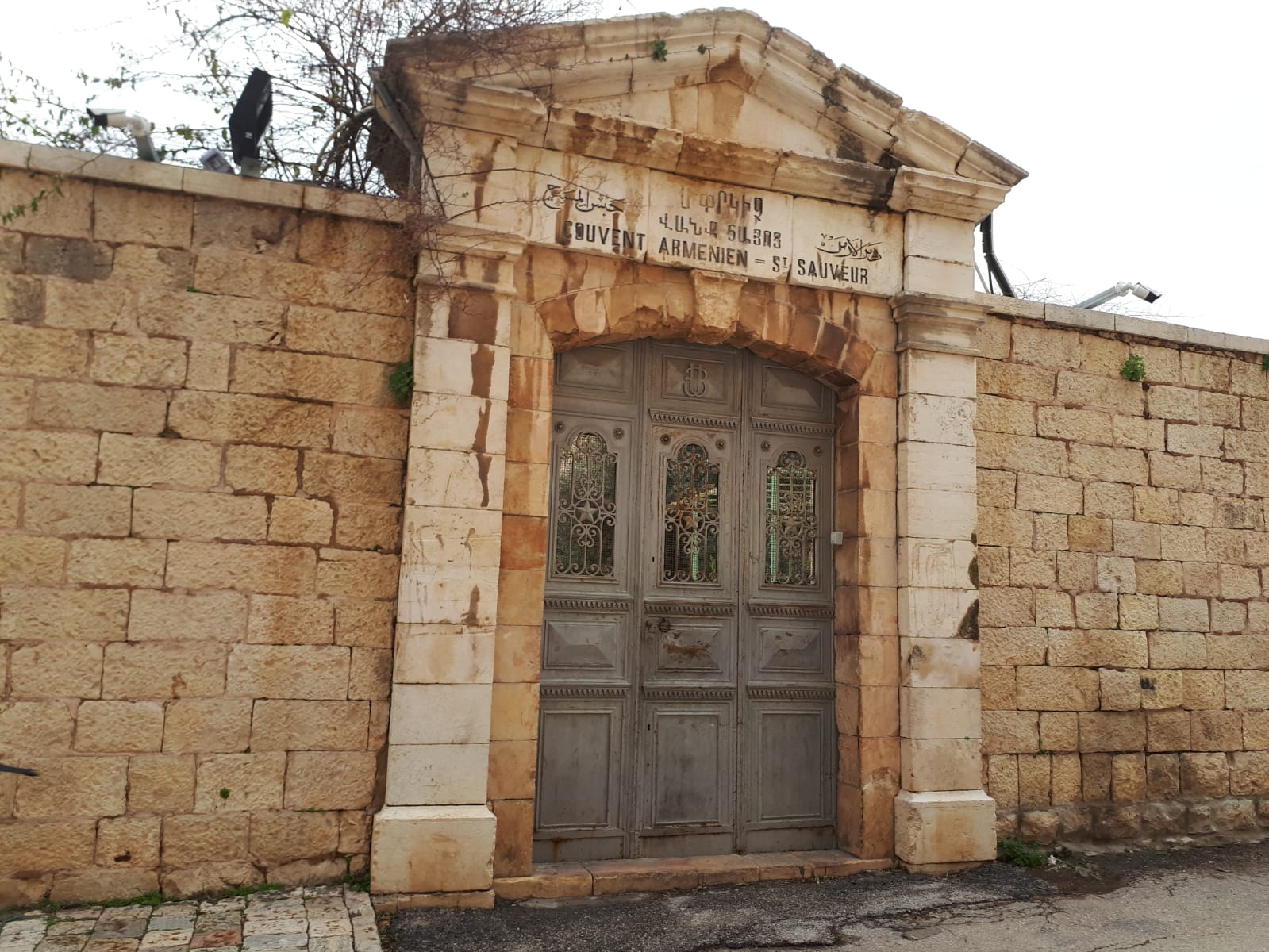
Climb the stairs to the right of the open courtyard – underneath the vine awning, until you reach the parish cemetery.
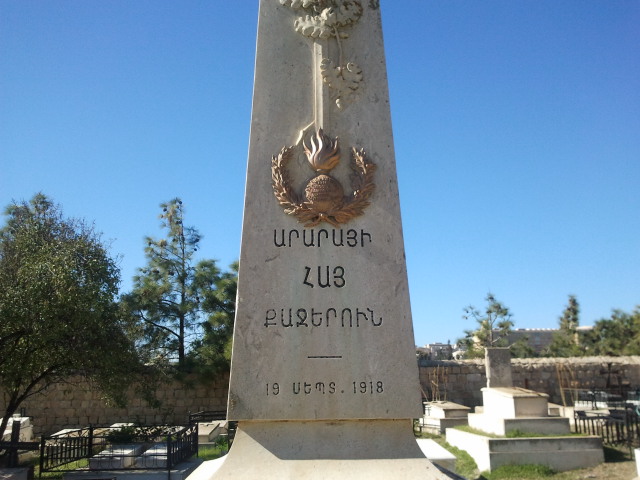
Exit the compound and return the way you came towards Zion Gate. When Zion Gate is on your left, turn right and walk until the paths split.
At the intersection is the entrance gate to the Ad-Cenculum monastery. You can ring the bell and ask for permission to enter.
At the fork in the path go on the right-hand path. After about 20 meters, you will reach another split in the trail. Turn right again towards Dormition Abbey.
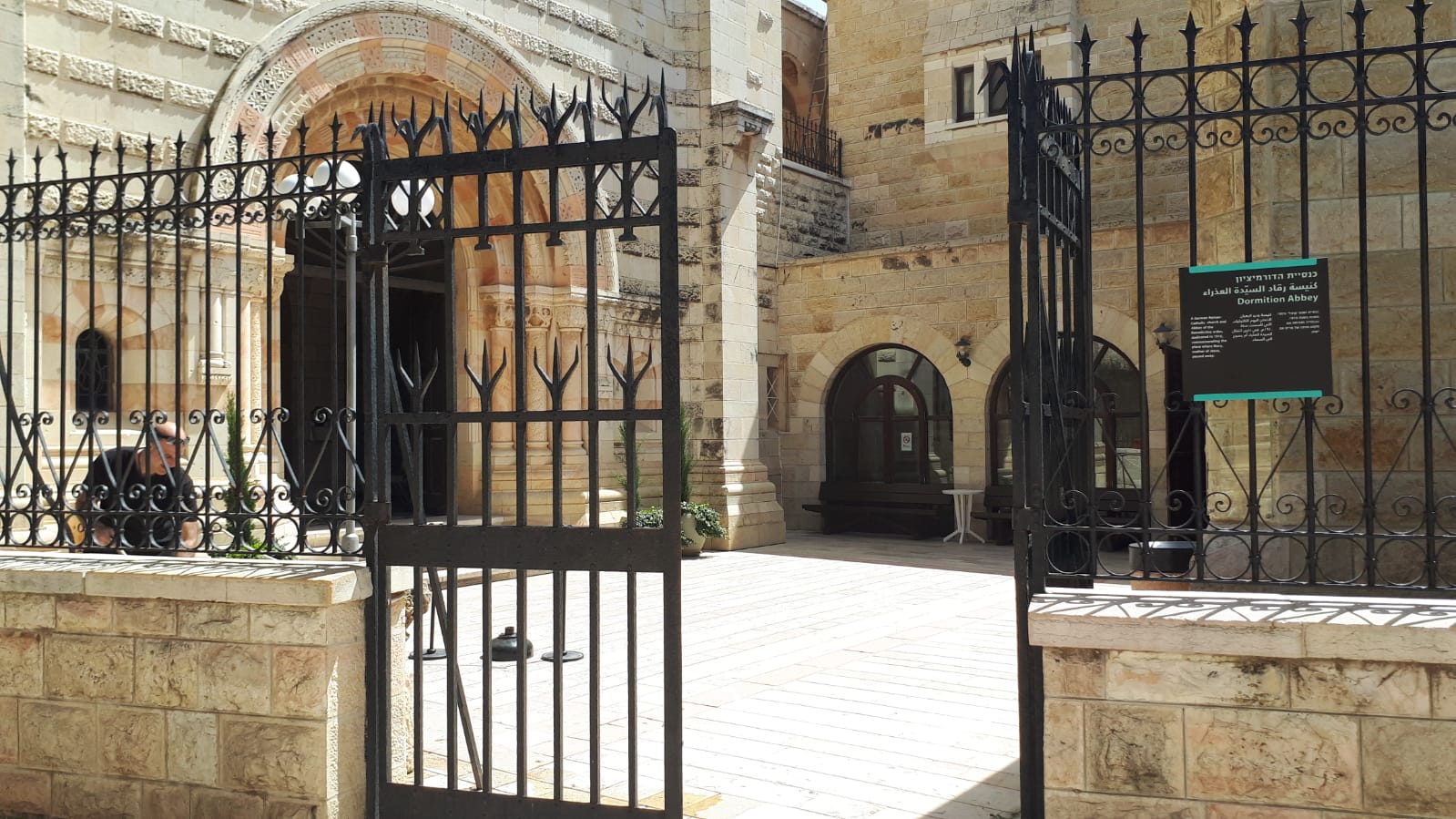
Exit the church and turn right again toward where you came from. At the junction turn right again to David's Tomb complex and the Room of the Last Supper.
After about twenty meters on the left you will see a gate with stairs leading to the Room of the Last Supper. To the right of the stairs you will see two large doors – these doors lead to the Spanish synagogue.
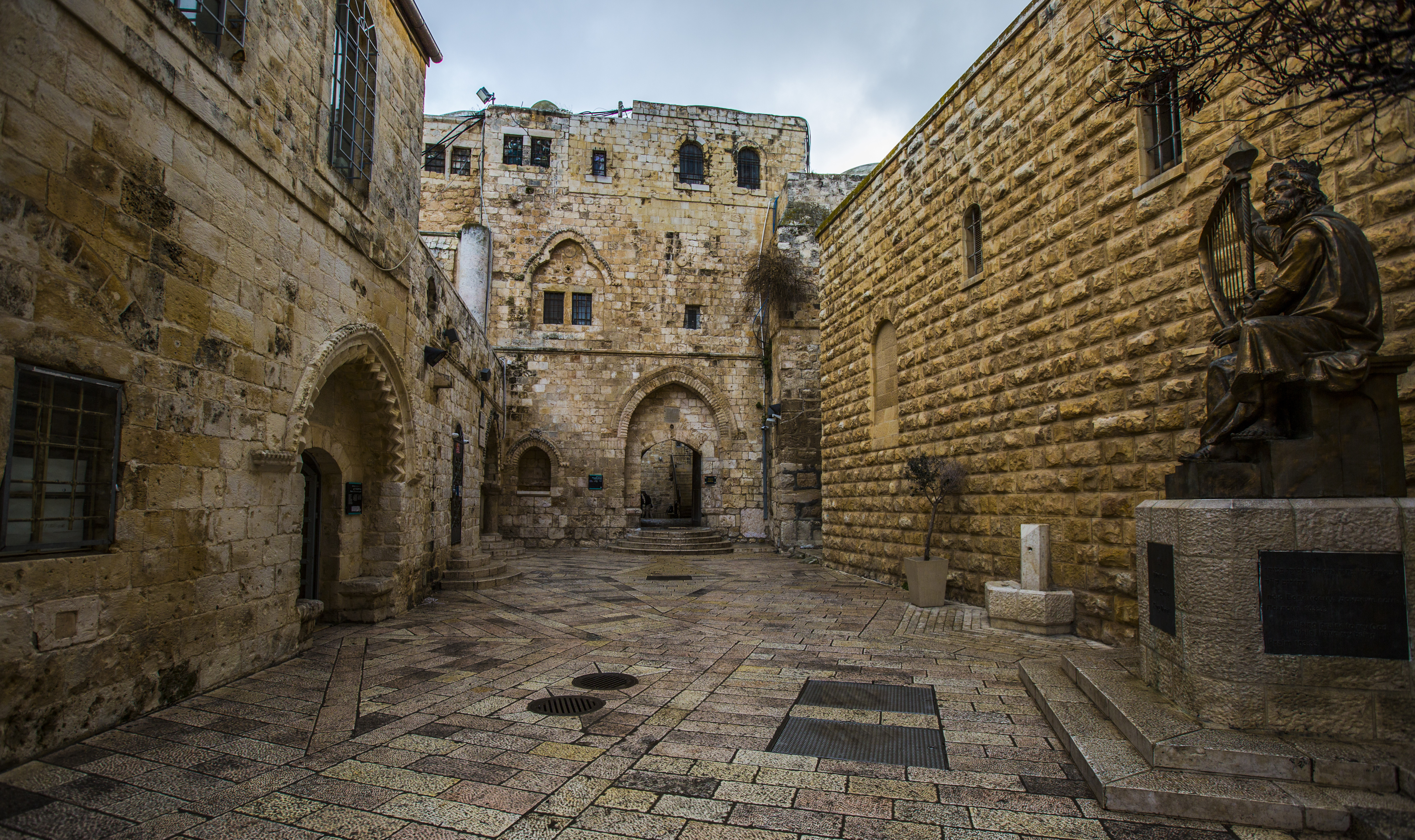
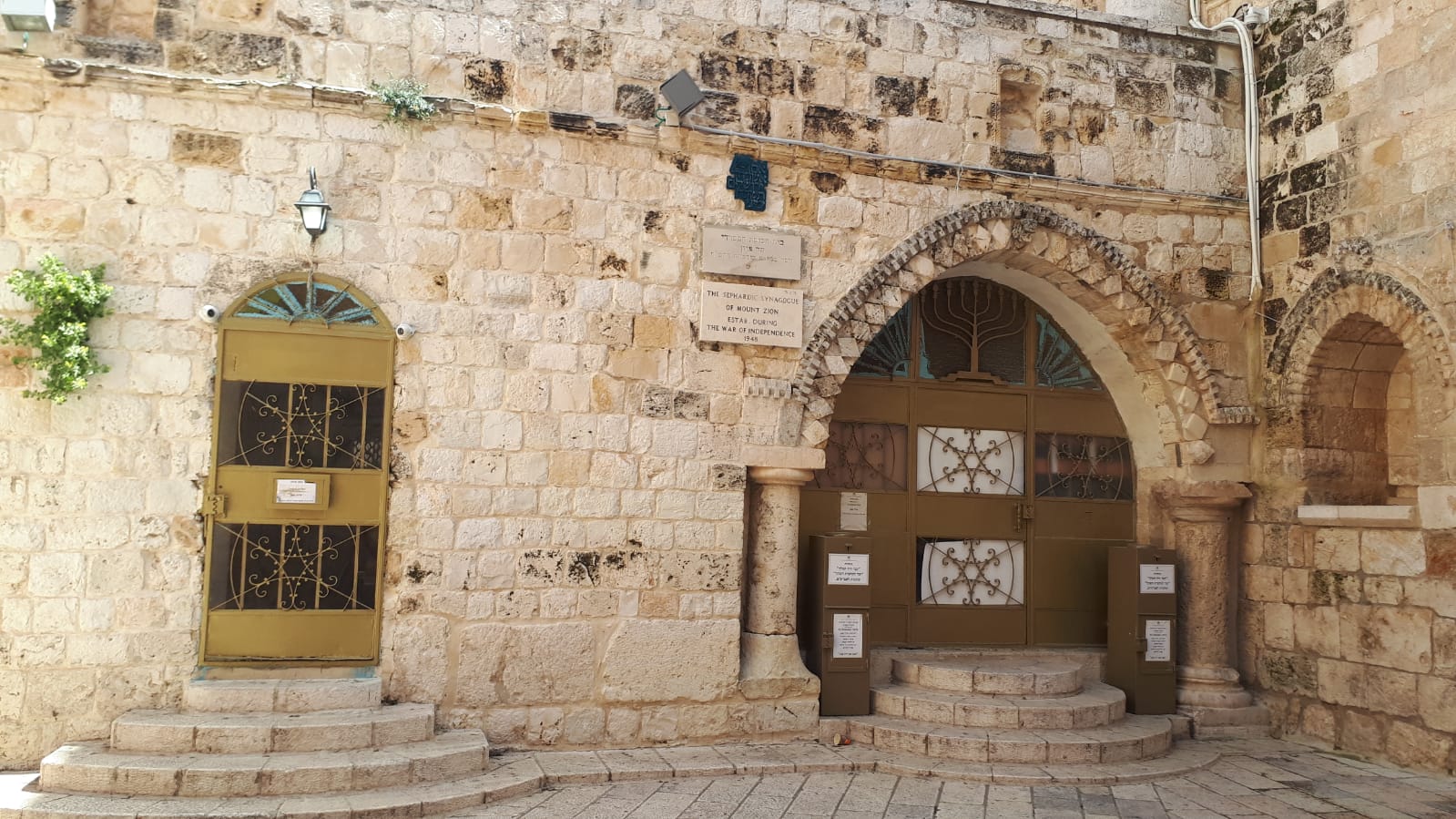
Go up the stairs, go through the guard room and enter Room of the Last Supper.
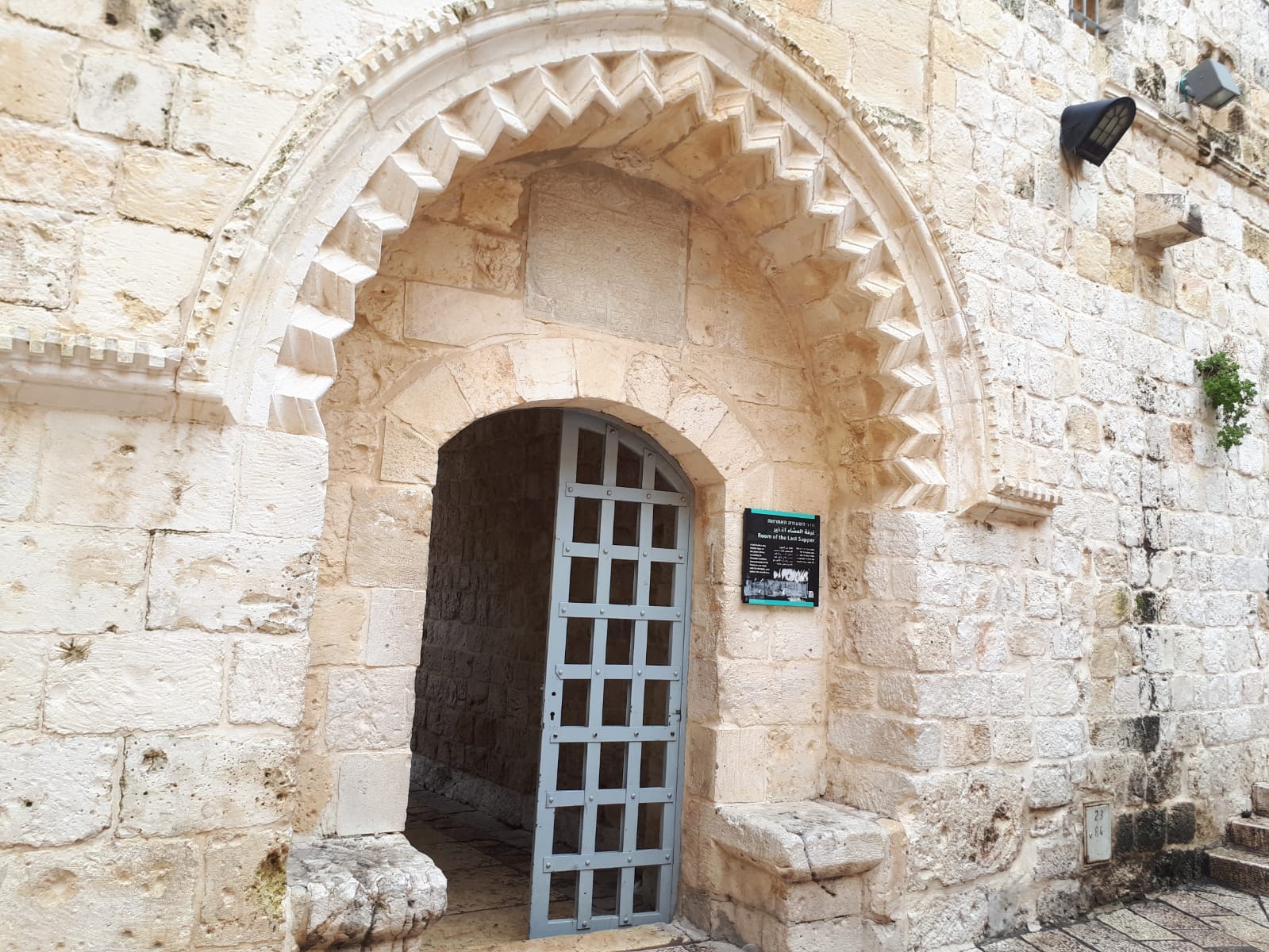
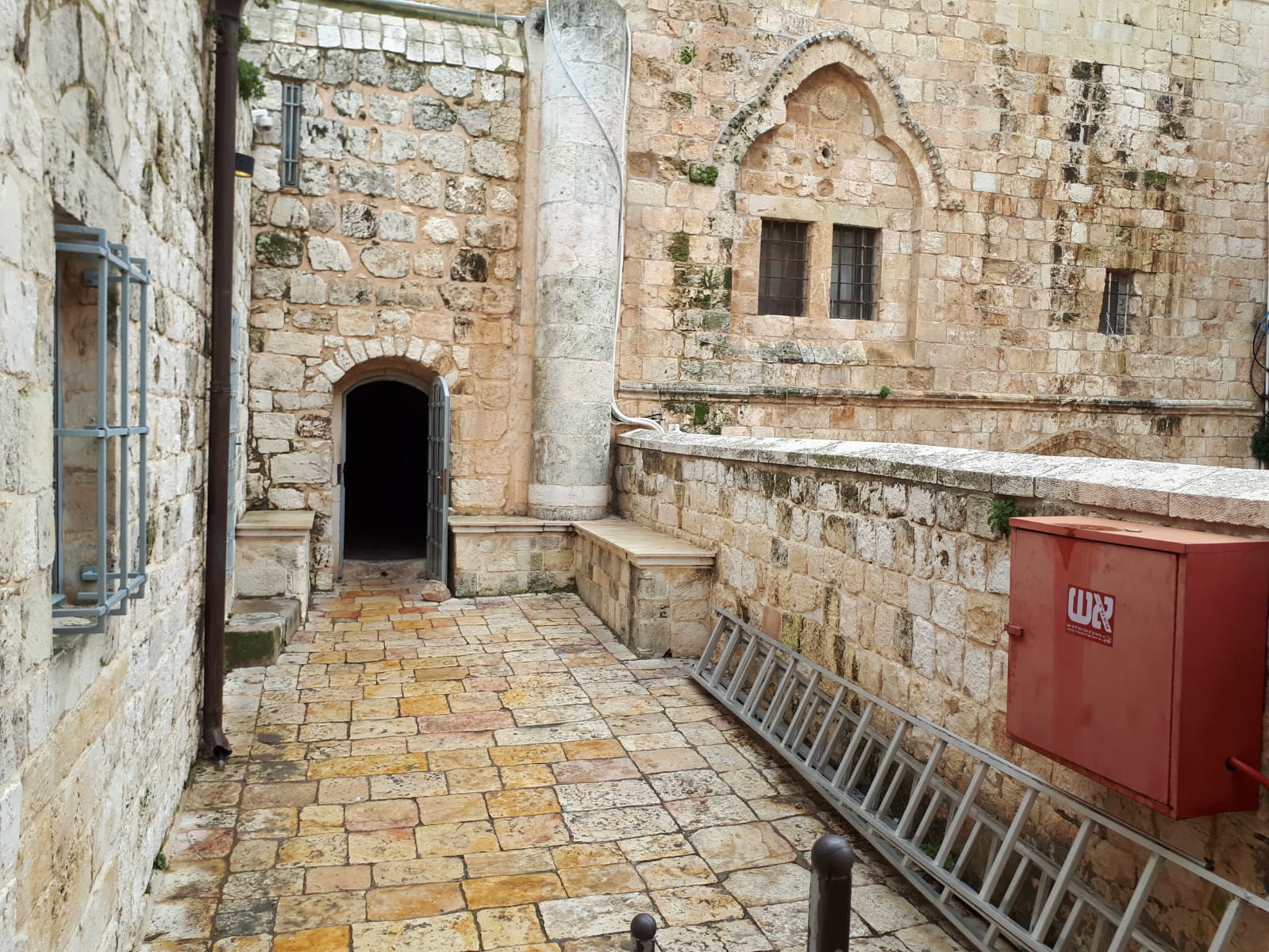
Exit the Room of the Last Supper through the exit. Climb the stairs to your right to the roof of the building.


Go down the stairs. Turn right and enter the iron gate. On the left is the entrance to David's Tomb.
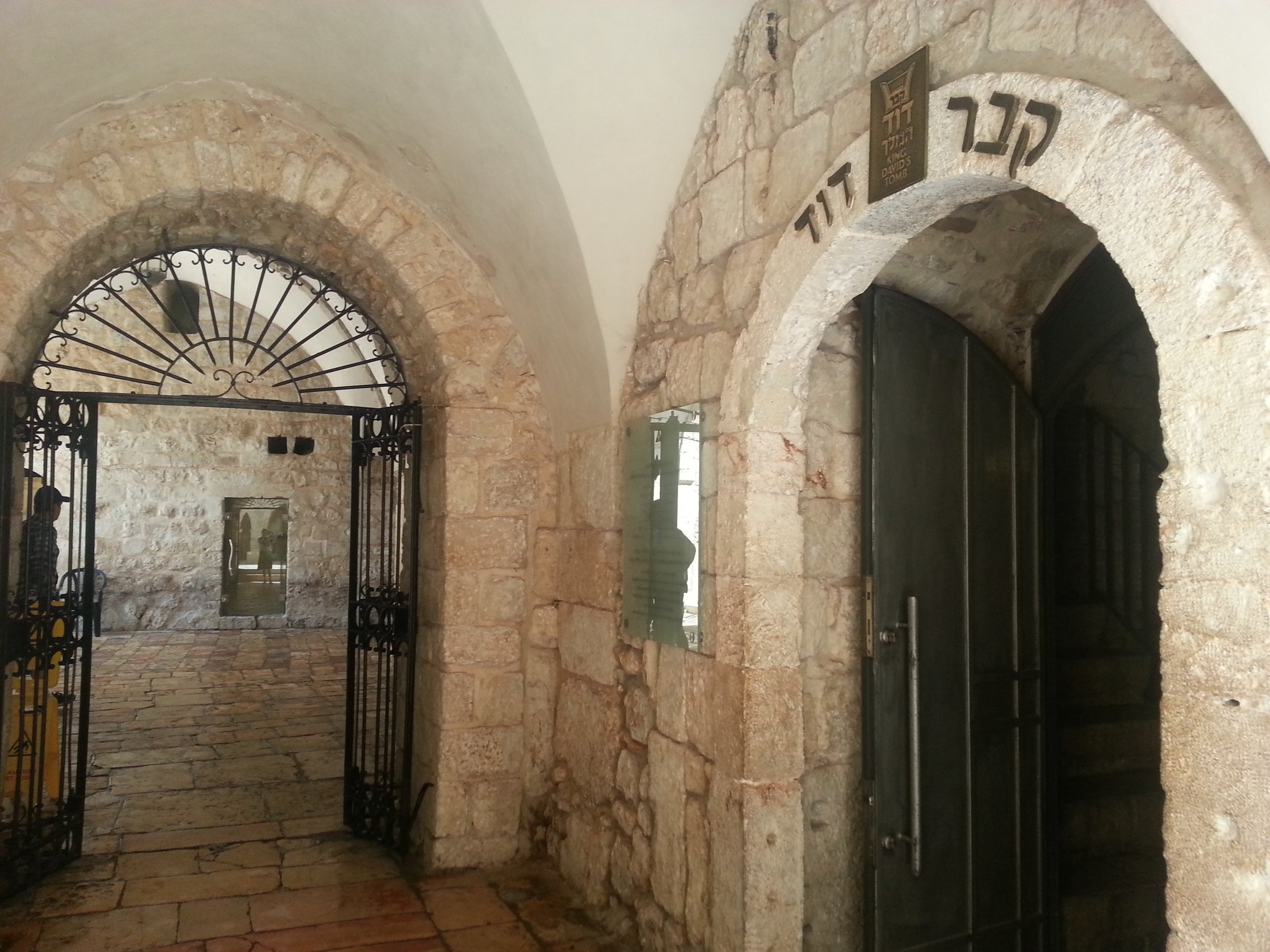
Exit David's Tomb and turn left into a courtyard surrounded by arches. The complex is also known as the Nabi Daoud complex for Muslims
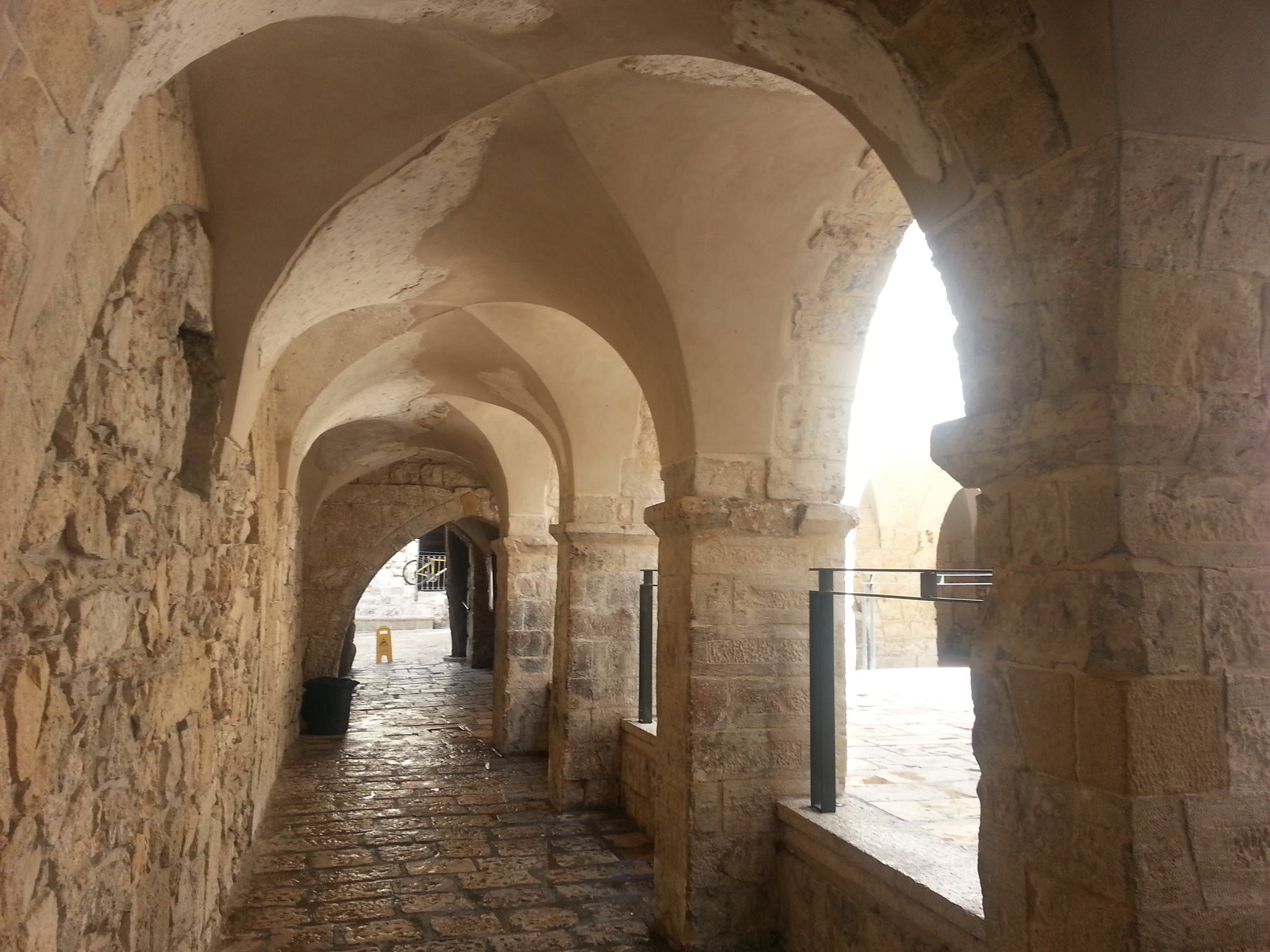
With your backs to David’s Tomb, turn left, go through a covered foyer. Cross the foyer until you see an exit sign and exit the complex. After leaving the complex, look left to a small cemetery. This is the Dajani family cemetery.
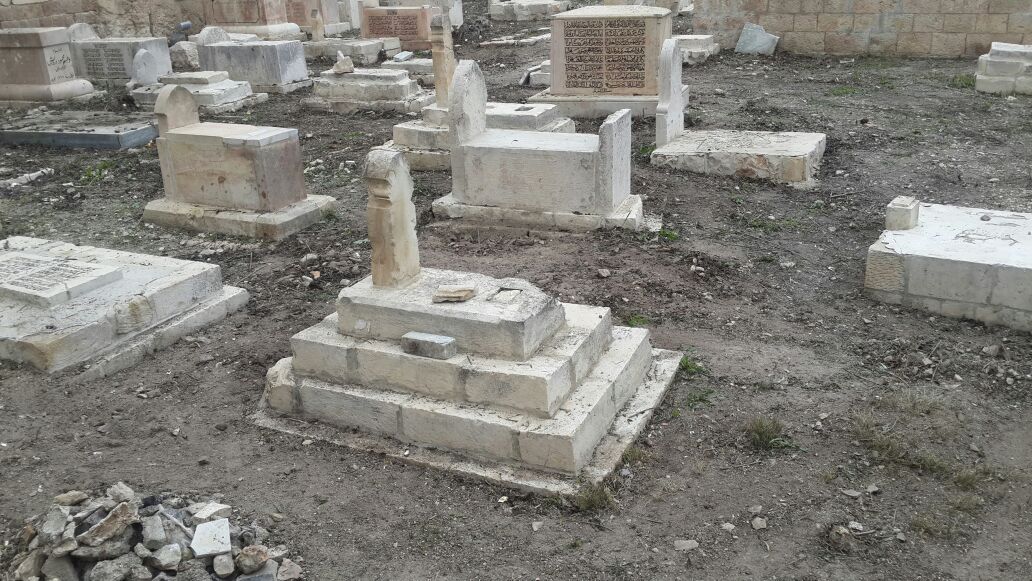
Go down the stairs and exit through the outside gate of the complex. In front of you is a gate and a lead statue of a girl. To the left of the statue are stairs leading to the Chamber of the Holocaust.
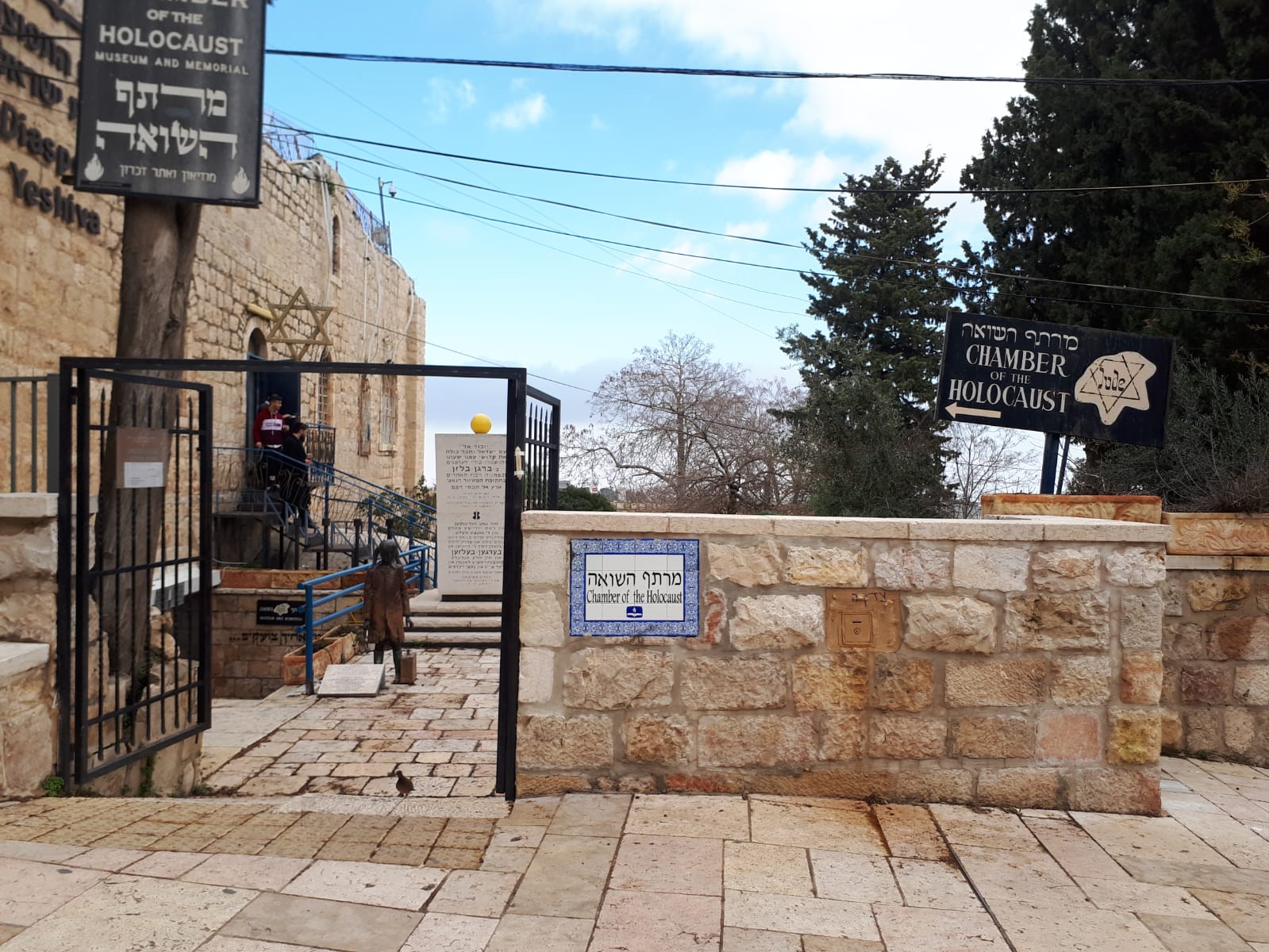
From the Chamber of the Holocaust, return to the path and turn left. Keep on the path until it ends. At the end you’ll see a building with a red tiled roof. This is the home of the Jerusalem Intercultural Center. Go around the building to the right until you see a green front door.
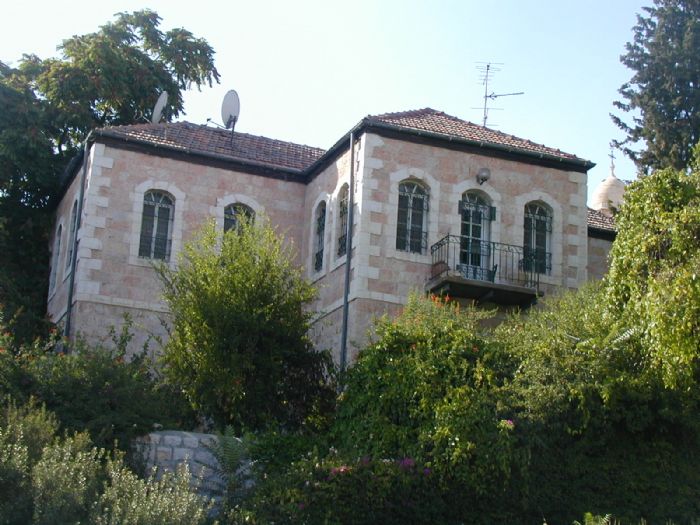
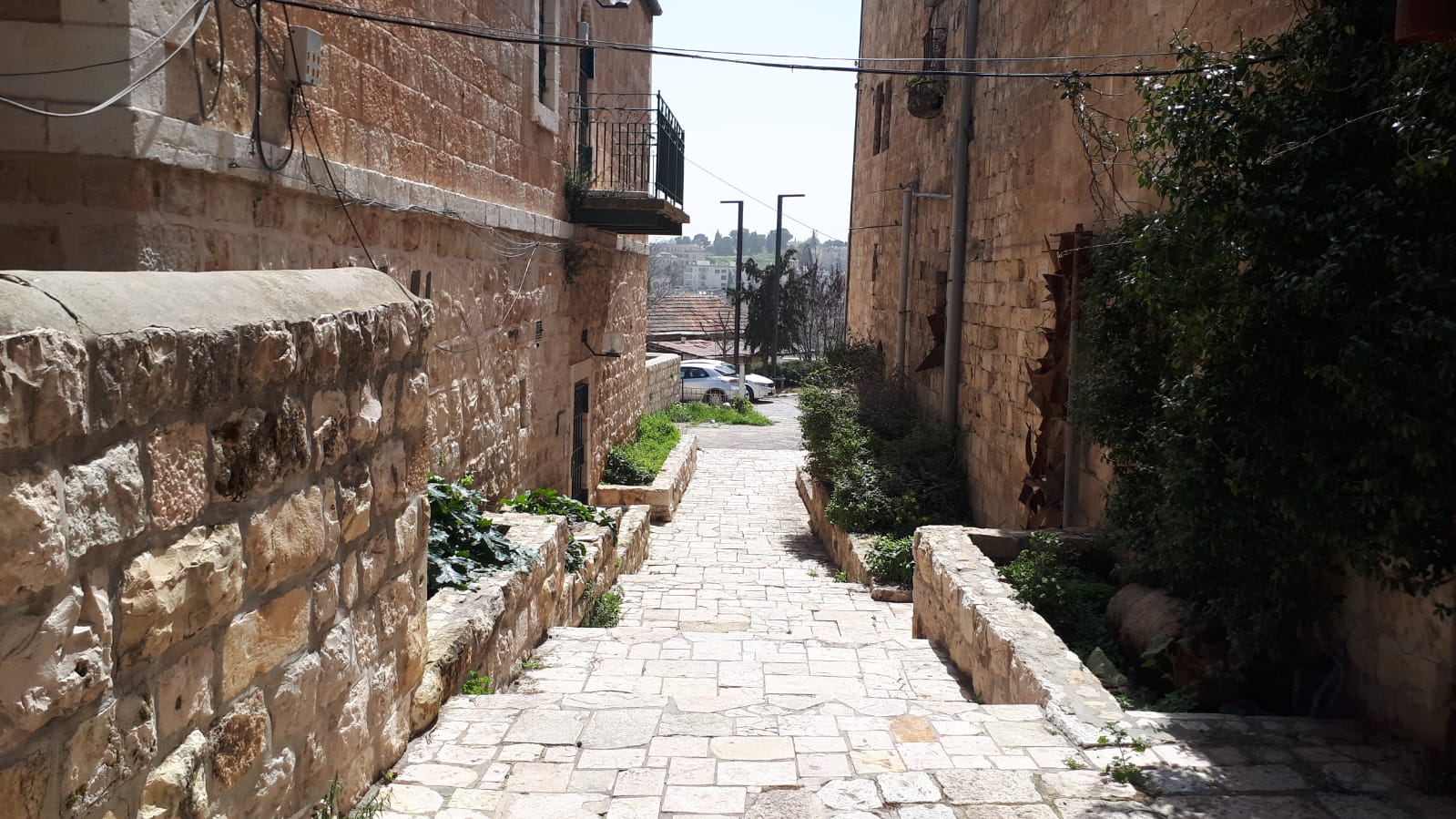
Opposite the Jerusalem Intercultural Center is the home of artist David Palumbo.
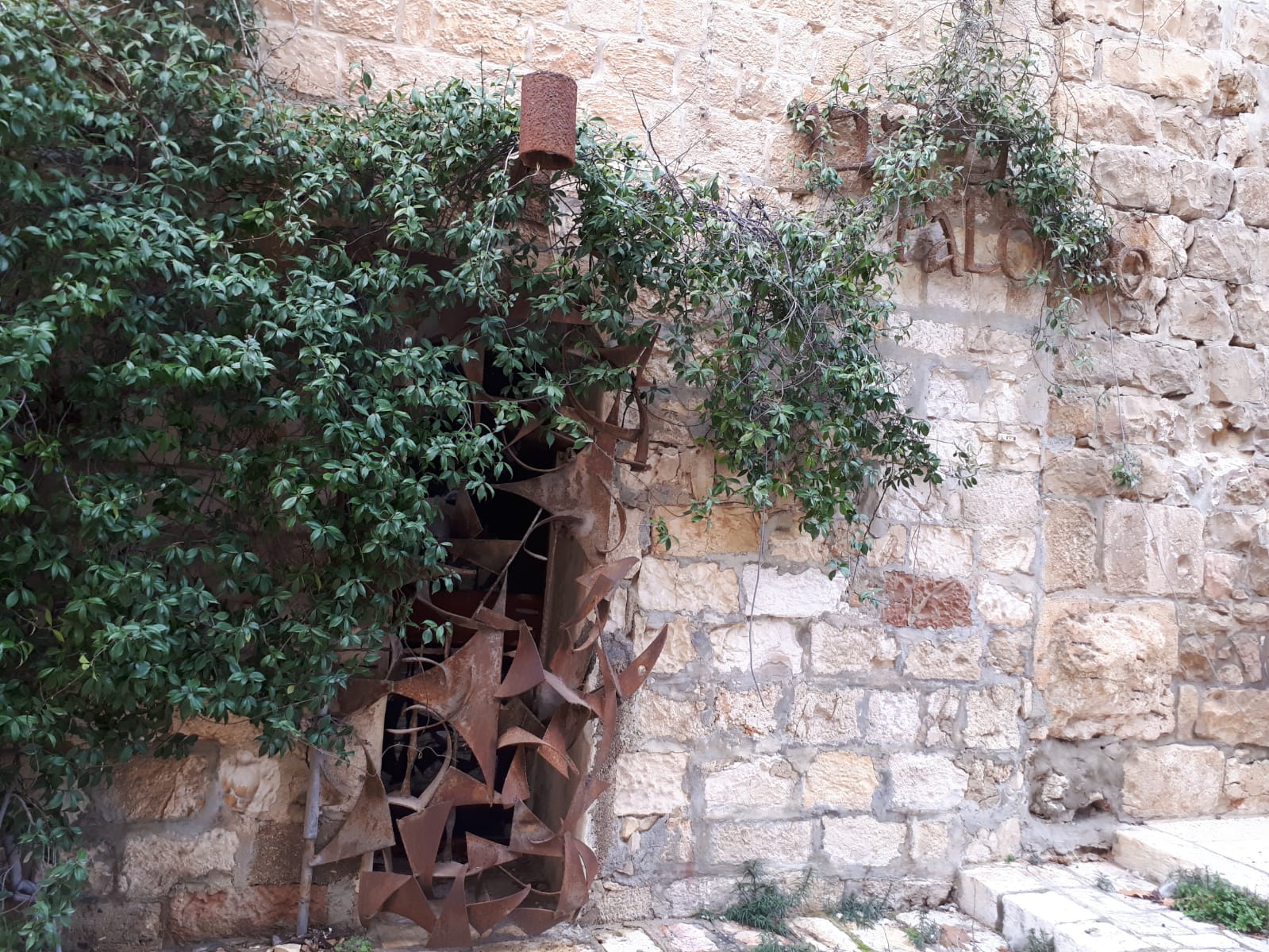
Pass the building and continue toward a small private parking lot. Cross the parking lot and go through the parking barrier. Turn right up the road until you see an iron gate. Pass through the iron gate to an open area with some pine trees leaning on their side. Near the top of the hill on the right is a stone wall. Behind it is the Greek Orthodox Cemetery used by the community.
Further down the cemetery is a stone building. This is the Greek Orthodox Seminary.
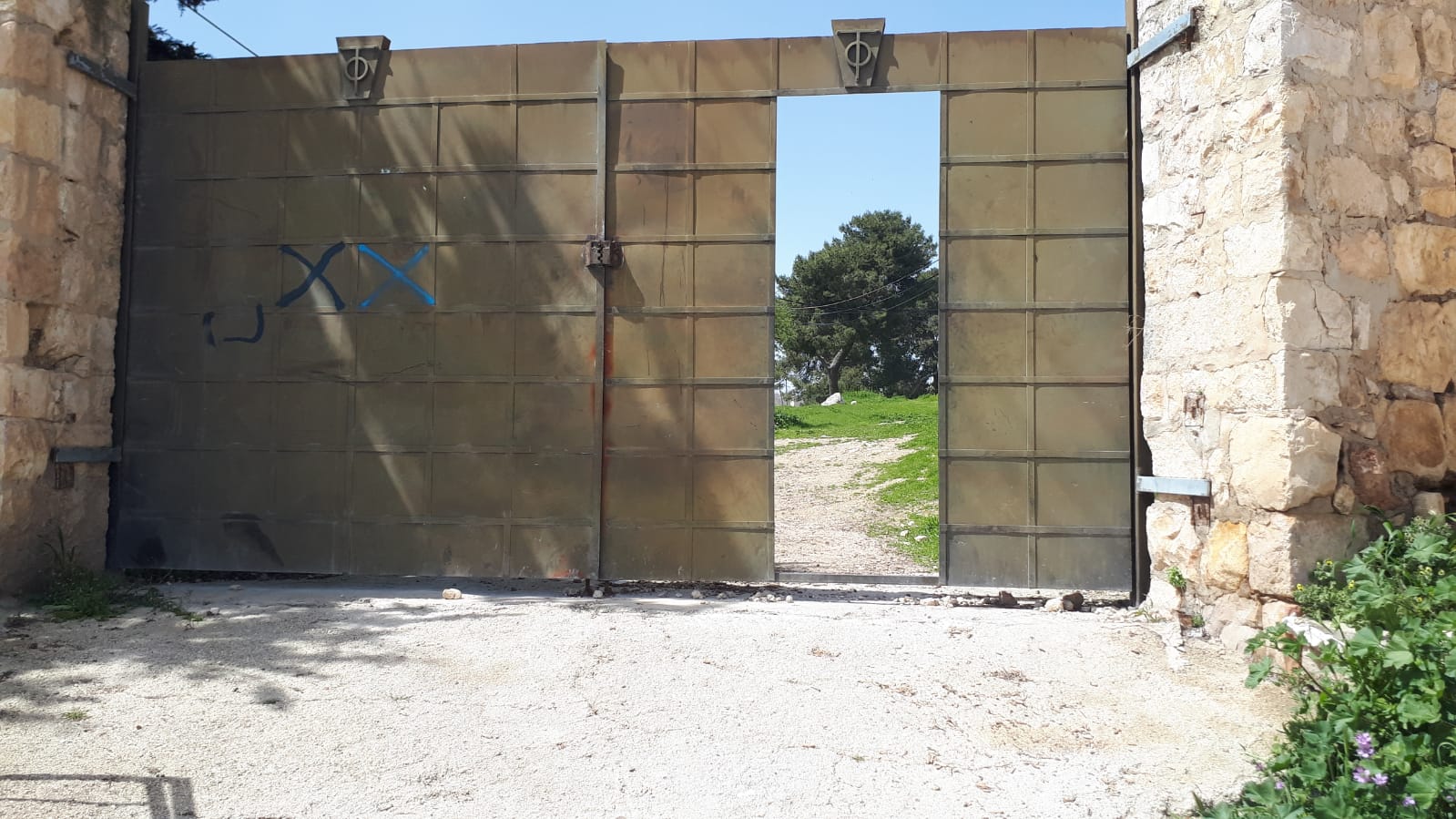
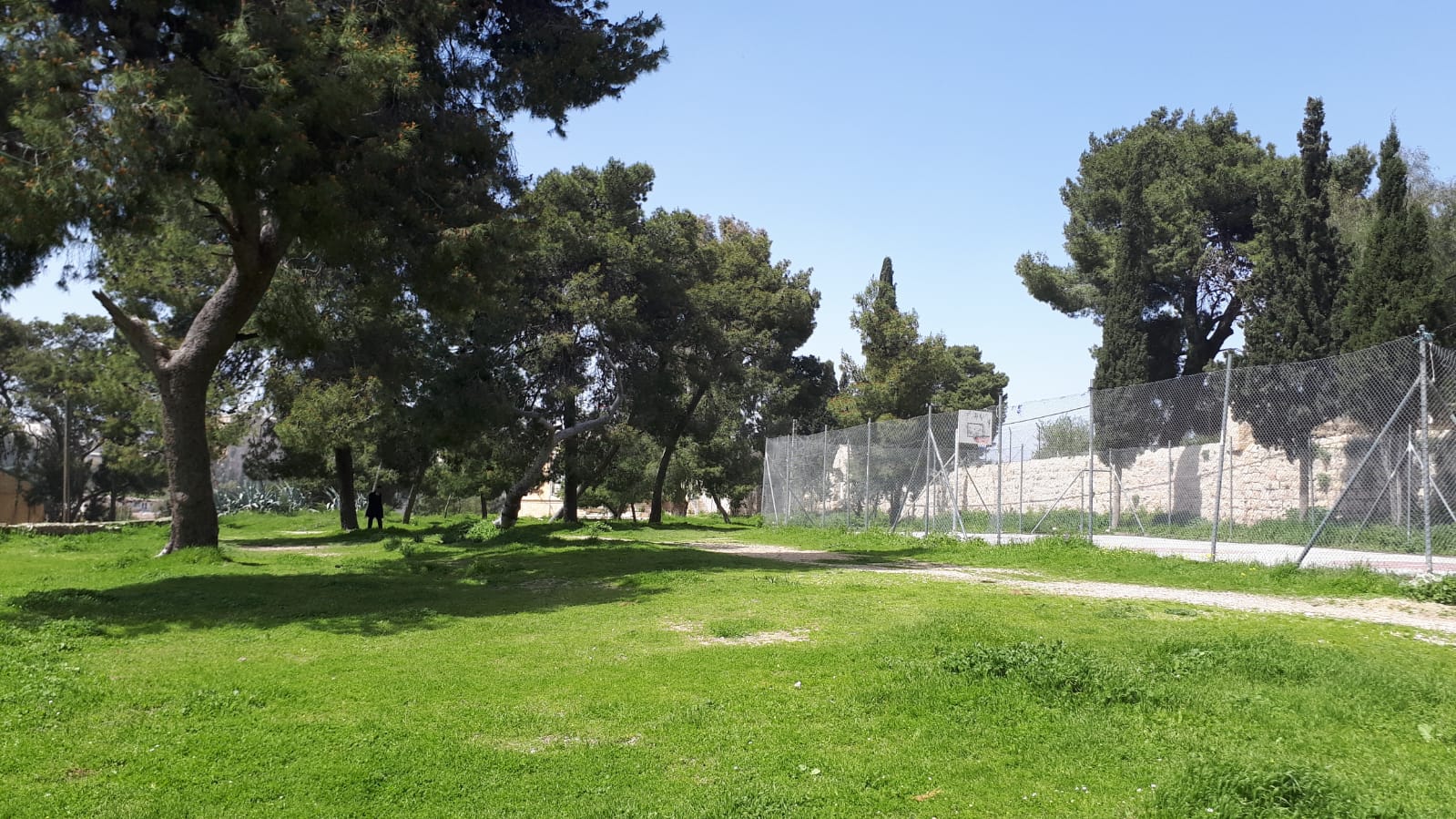
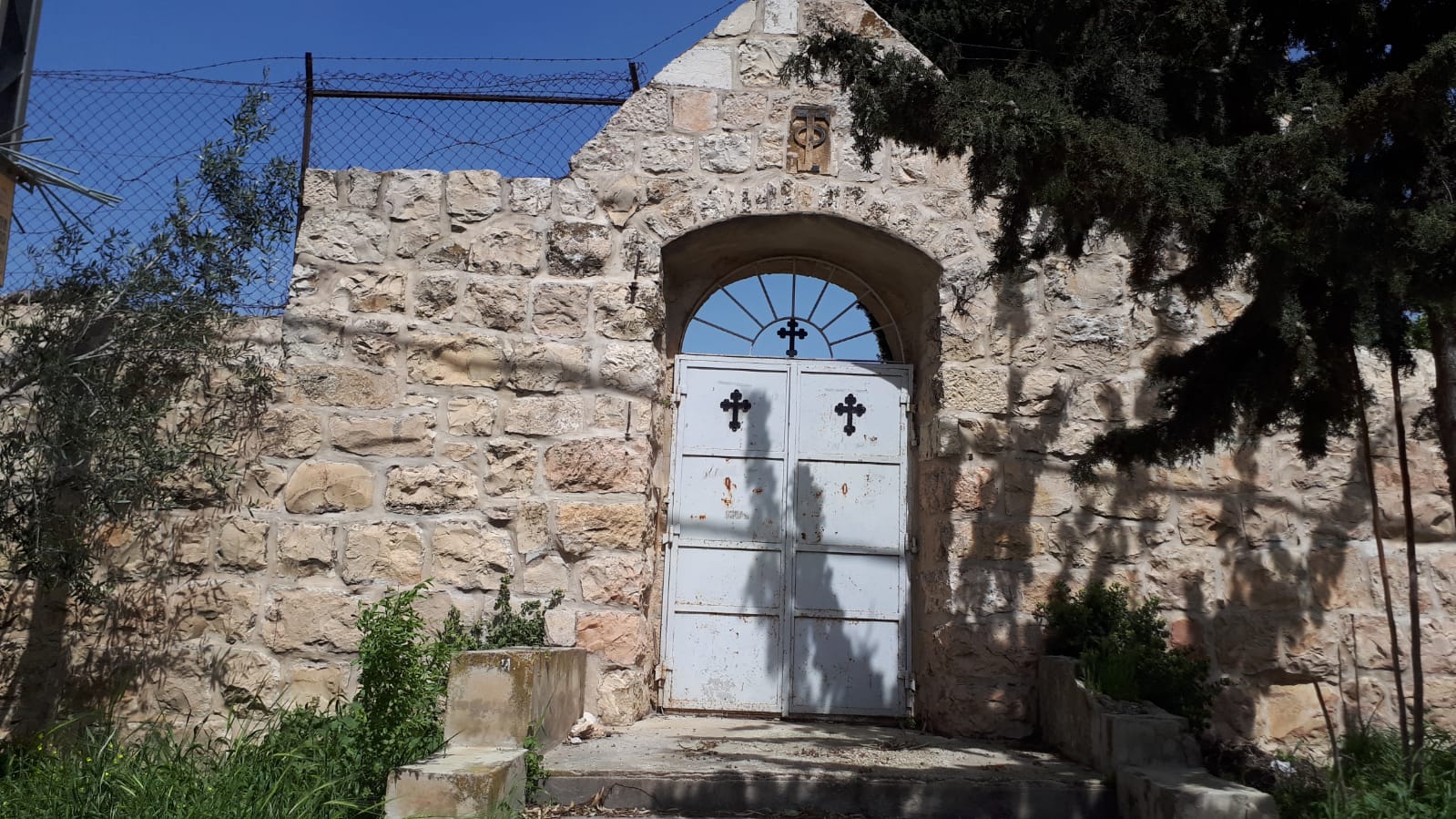
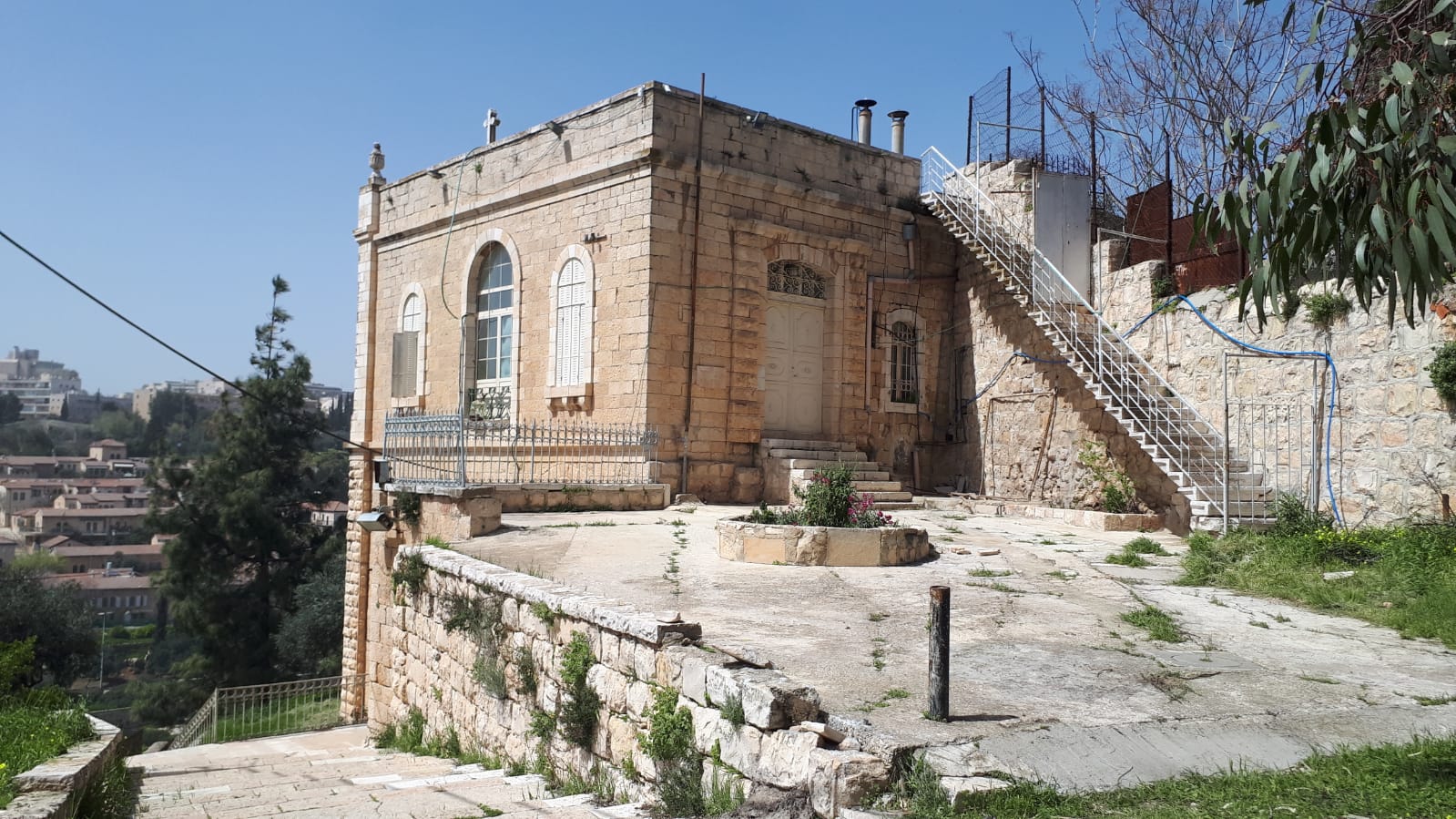
Cross the pine grove until you reach a staircase. Go down the stairs until you reach the paved road. Turn left. In front of you, you can see the American school complex. Entrance is by prior arrangement, and through the complex it is also possible to reach the Protestant cemetery and the historic cable car wheel of Mount Zion.
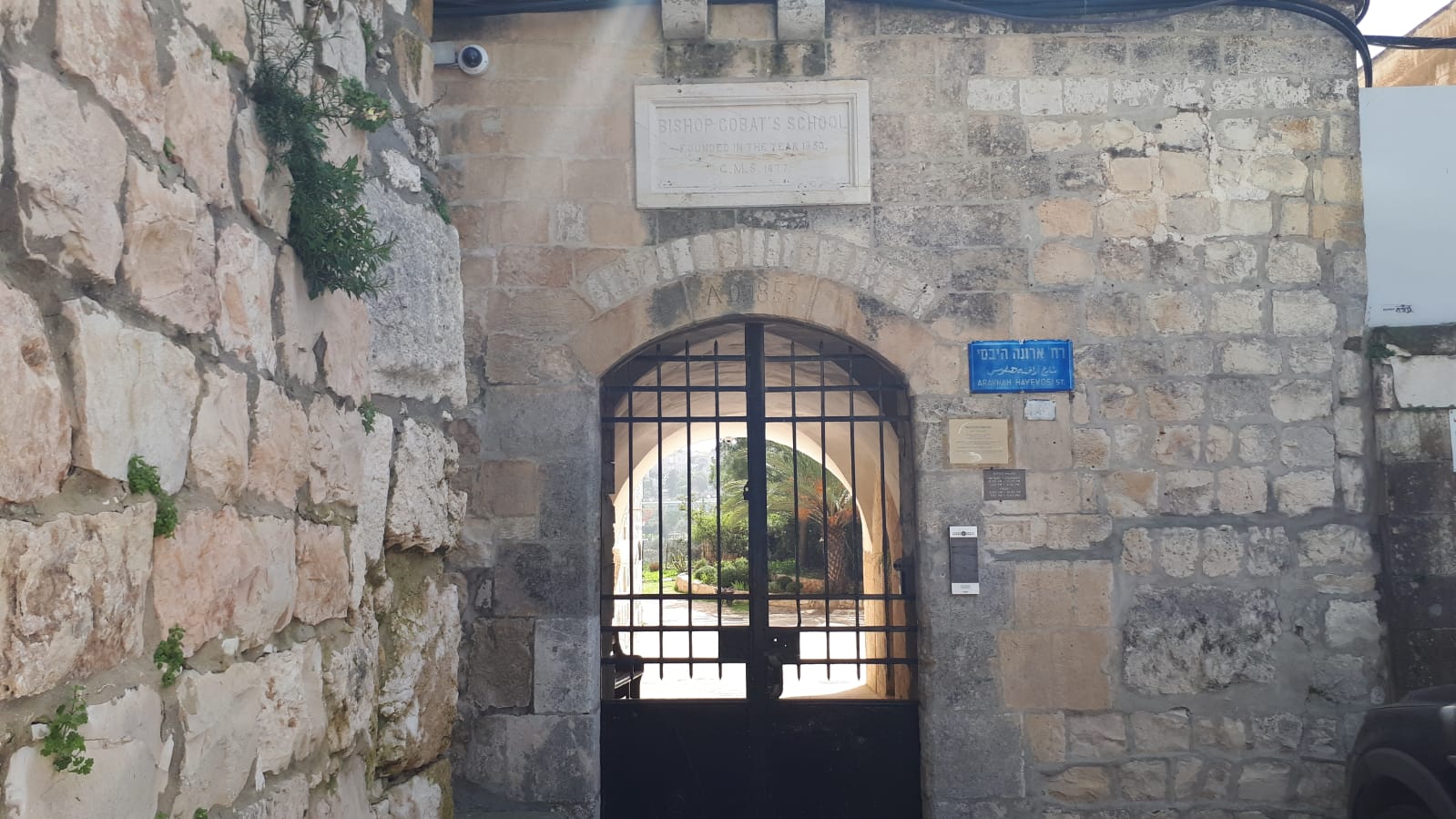
Go down the stairs next to the Jerusalem University College until you reach an intersetion with a traffic light.
On your right you can see the remains of a channel that helped the Israeli forces in the War of Independence after the occupation of Mount Zion.
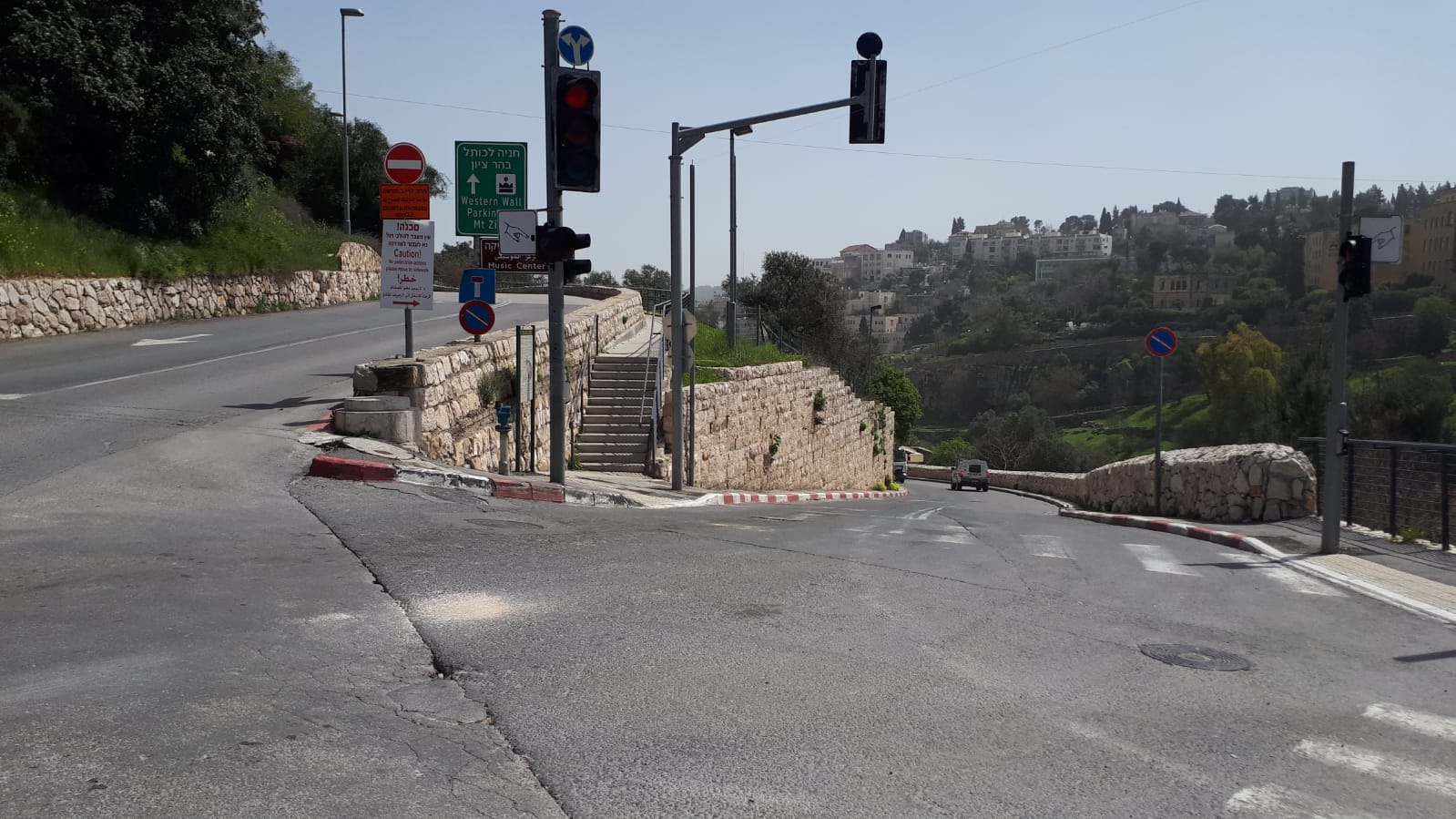
Cross the intersection at the crosswalk and turn left. Cross another intersection and climb the scenic promenade along the road. This promenade is also called "Elijah the Prophet" and the road next to it is also called "Pope's Road" because it was paved for Pope Paul VI's visit in 1964.
On your right you can see Hinom Valley, and on the other side of the valley, the Jeursalem Cinematheque, the Mount Zion Hotel, the Menachem Begin Heritage Center and the Abu Tor neighborhood.
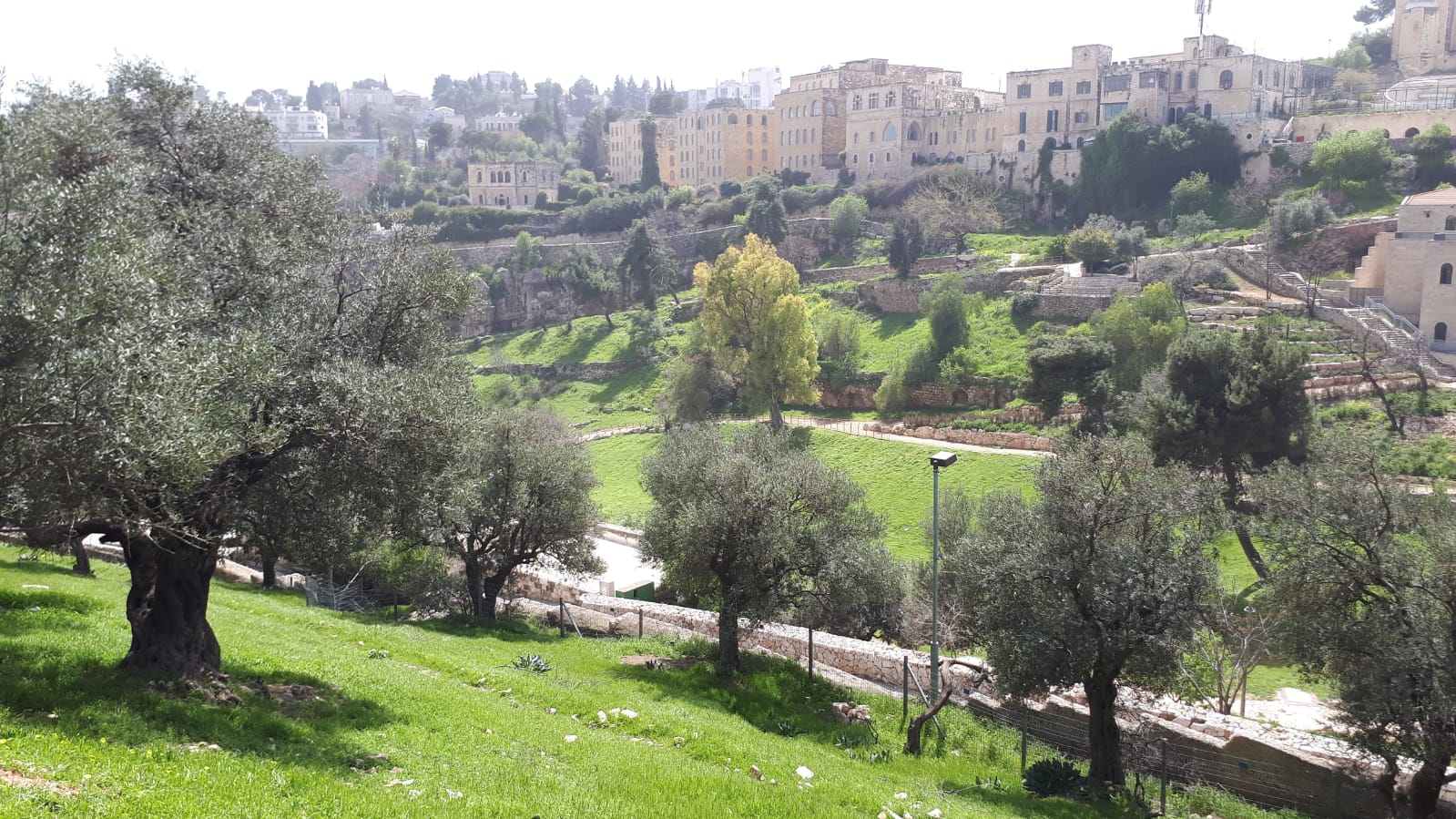
Go up the path until you reach an environmental sculpture that has three black and white striped frames. This is the Zurich Garden.
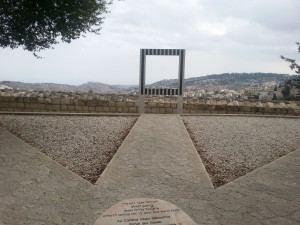
Directions to Samboski Cemetery:
To the right of the plaza at the Zurich Garden you will see a small narrow staircase. Go down the staircase, and keep going along the winding path to the right. Pass an archaeological excavation and continue for about five minutes along the trail. Walk until you reach a small plaza followed by a steep slope covered with tombstones. This is the Somboski Cemetery.
Exit the cemetery and turn left. Walk down the road until you reach a small garden with a statue of windows facing the landscape.
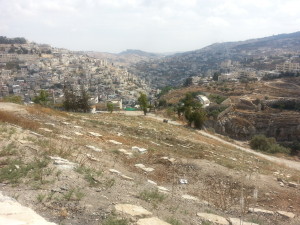
Return the same way up to Zurich Garden.
Keep climbing along the Pope’s road until you see a small parking lot on your right and a arc-shaped iron gate. This is the Catholic cemetery where Oskar Schindler is buried. You can enter freely during opening hours.
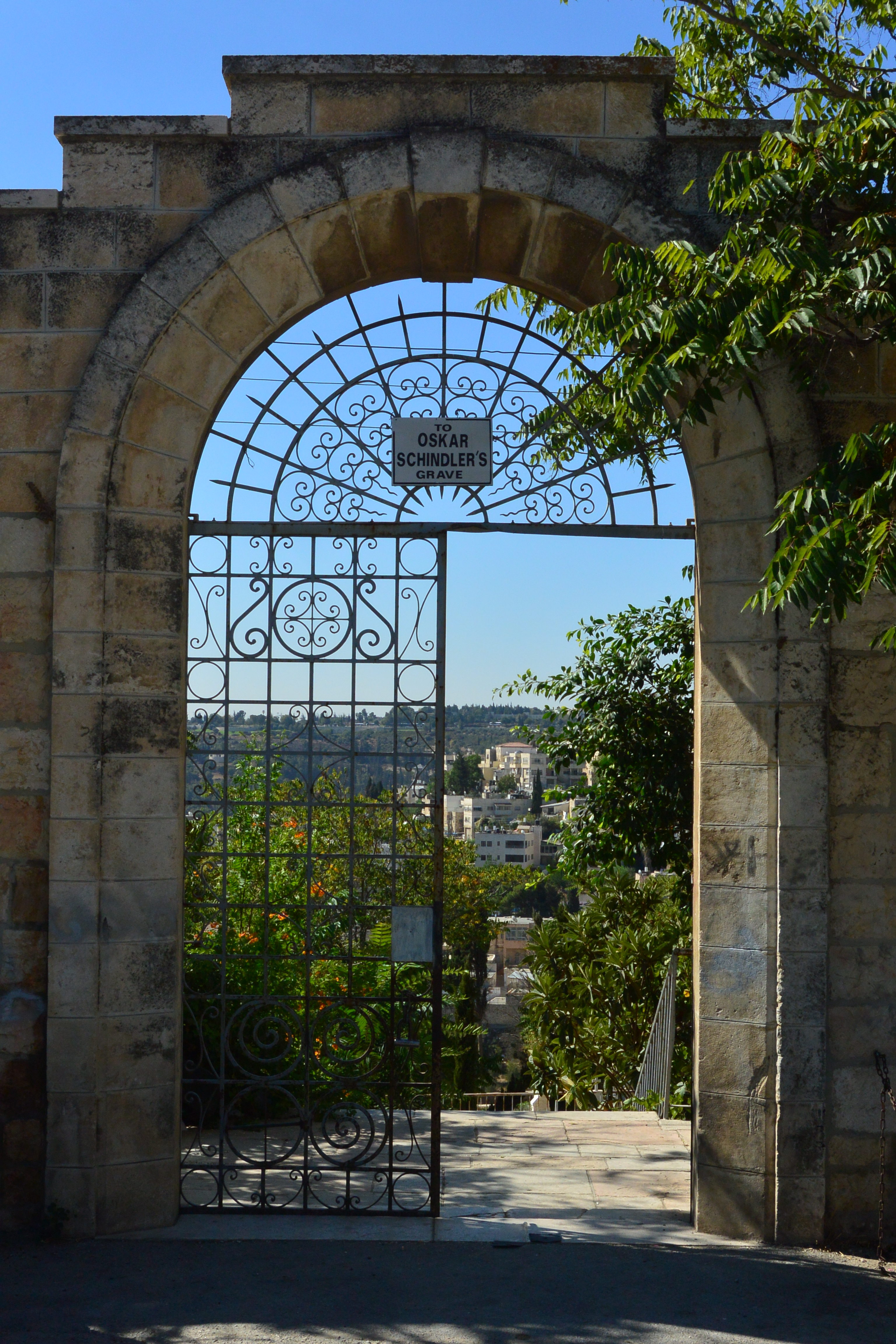
From here you can continue to Church of Saint Peter in Gallicantu, the Western Wall, the City of David and the Mount of Olives, or enter through Zion Gate and take a stroll in the Old City.
Bus lines from the nearest bus stop towards the city center: 1, 3, 38.
